| Compact car; Built in Japan |
|
|
| Good condition price range: $1,800 – $4,800* |
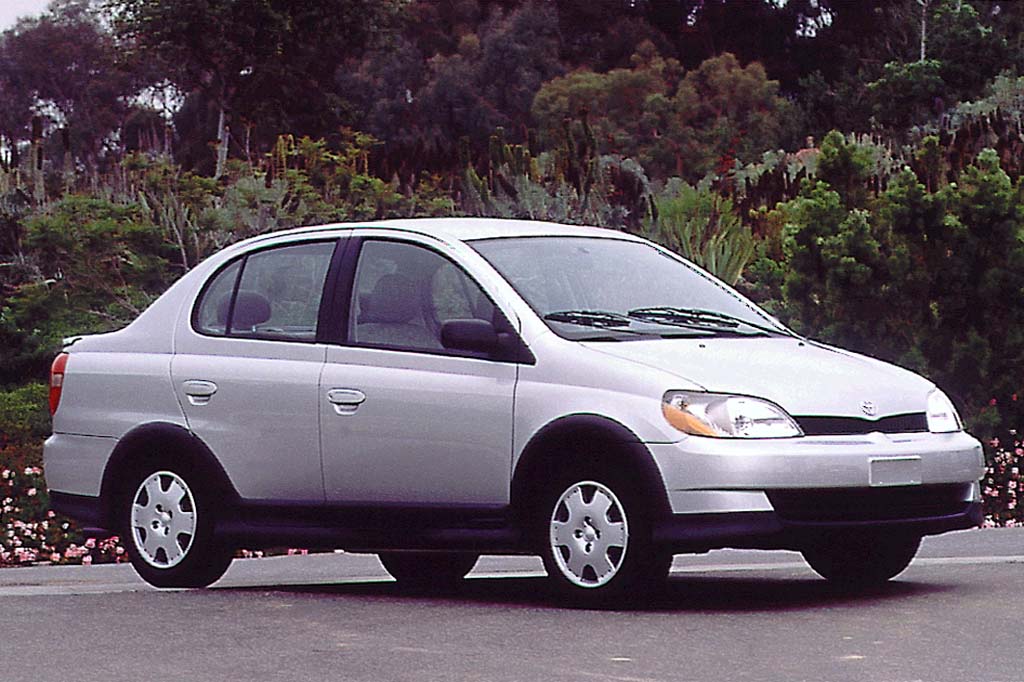
2000 Toyota Echo 4-door sedan
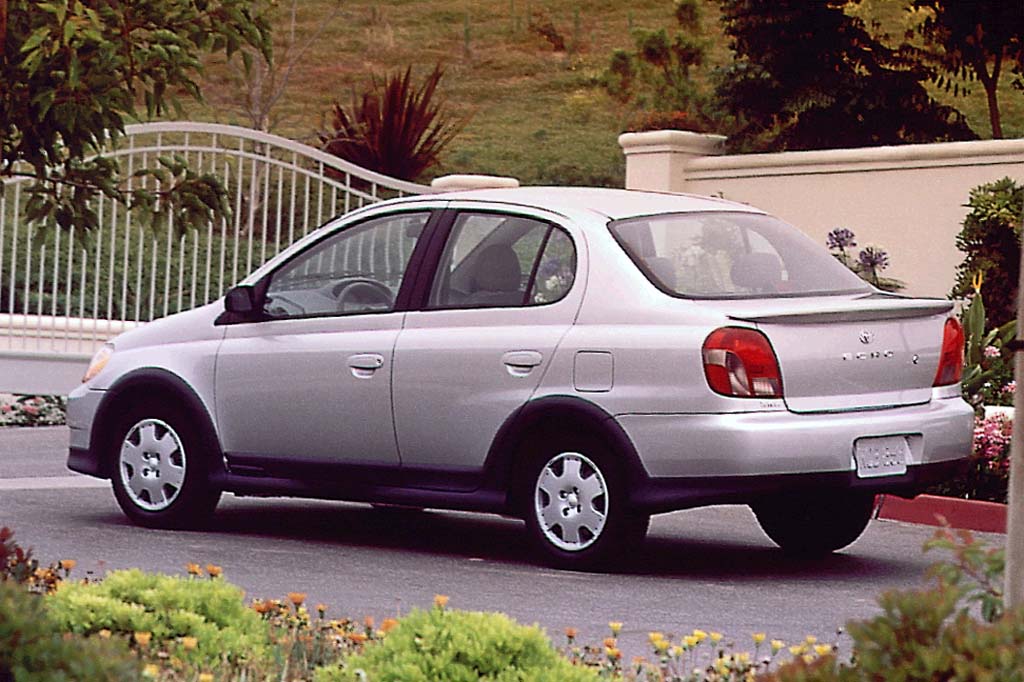
2000 Toyota Echo 4-door sedan
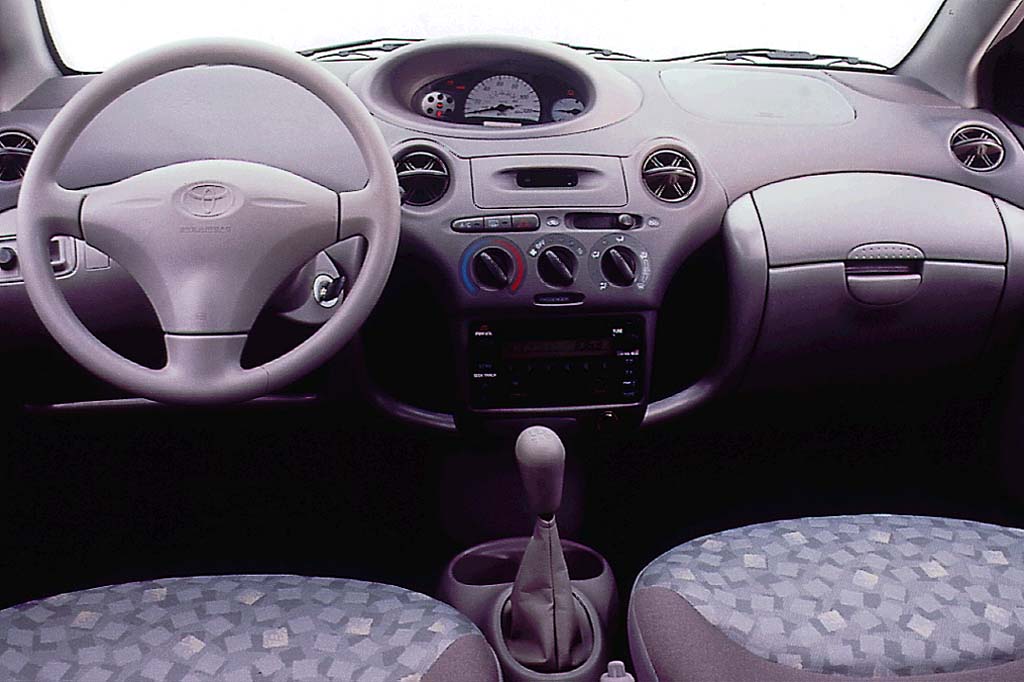
2000 Toyota Echo interior
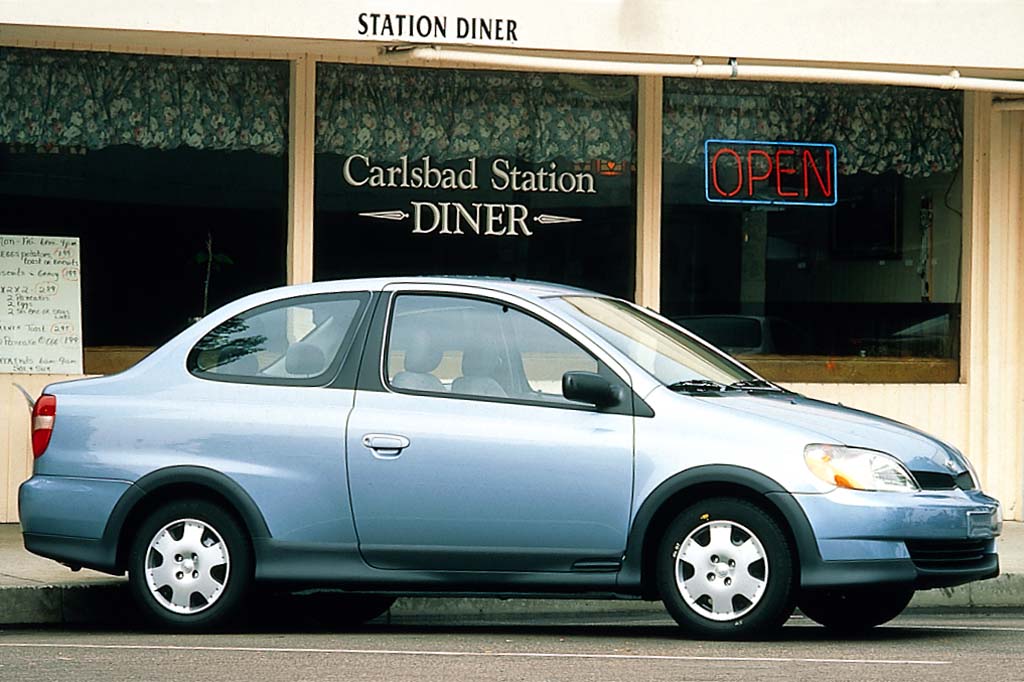
2000 Toyota Echo 2-door coupe
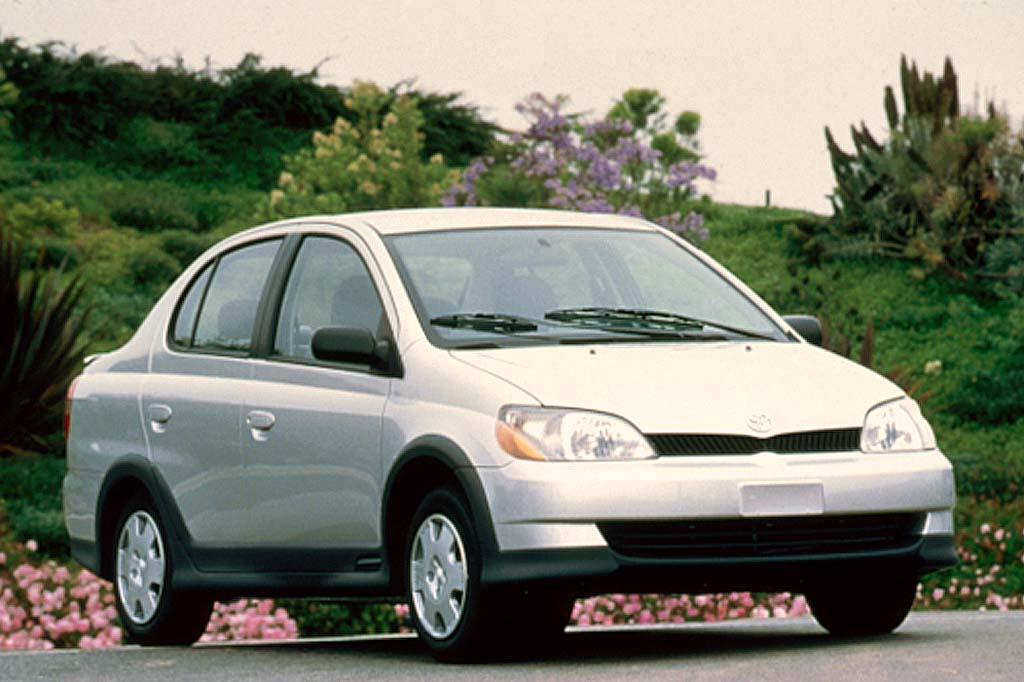
2000 Toyota Echo 4-door sedan
| Pros: |
|
| Cons: |
|
Pleasant and efficient, the Echo blends tempting prices with Toyota’s strong reputation for quality and reliability. Sales have been tepid for such an affordable car, suggesting that the targeted young buyers have not taken to its styling. Performance is nothing special, but Echo is roomier than many rivals and the quirky look gives it a certain “character.”
Overview
Toyota launched an all-new “entry-level” front-drive subcompact for 2000, priced well-below the larger Corolla. Despite its smaller exterior dimensions, the new Echo featured interior space similar to the Corolla’s. Two- and 4-door sedans were offered.
Power was supplied by a 1.5-liter 4-cylinder engine that produced 108 horsepower. Manual shift was standard, but the available 4-speed automatic transmission featured Toyota’s “uphill shift logic” programming that was claimed to minimize “hunting” between gears on long or steep upgrades.
A tilt steering wheel was standard, but power steering was an option. Also on the option list were antilock braking, air conditioning, cassette and CD audio systems, power door locks, and a split folding rear seat. The Echo was one of the few vehicles on the market with power windows not available.
No less distinctive than the Echo’s exterior profile was its dashboard, which consisted mainly of a speedometer and gauges mounted in the center, not ahead of the driver.
Yearly Updates
| 2001 Echo Except for one new color choice, the Echo was unchanged for 2001. |
| 2002 Echo There were no significant changes for 2002. |
| 2003 Echo Overall length grew 1.6 inches via new front and rear sheetmetal with revised bumpers, hood, front fenders, headlights, taillights, and trunklid, plus a new slat-design grille. Optional 15-inch wheels replace 14s. |
| 2004 Echo The Echo is unchanged for 2004. |
| 2005 Echo Echo is unchanged for 2005. The Yaris is due to replace Echo early in 2006 as an update of this basic design. |
